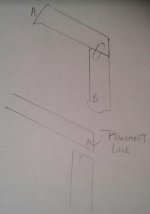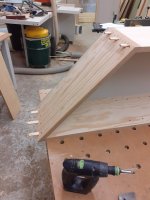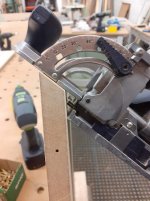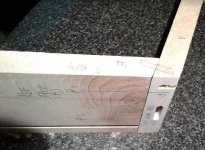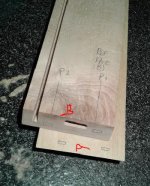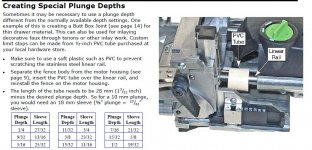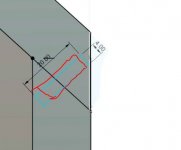Hi All,
Wondering you someone can help me. I have recently purchased the festool domino df500 intending to use it on a new project. I foolishly ordered my wood (precut to my specifications) before really experimenting with the domino much.
I need to join the two pieces of wood A & B in the image. My inital plan was to cut A along line 2 and B along line 1 and use the domino to join them together. Putting a mortice in the top of Piece B is no problem (planning to drill the mortice before cutting the angle) But having just been experimenting, it doesnt seem like I can put an angled mortice in a flat surface? Am I being an idiot or is this the case?
In hindsight I realise I should have ordered different lengths and done a cut along line 3. Anyway I can make this work without re-ordering pieces of wood?
Any help appreciated, apologies if its a really stupid question. Im guessing a jig might do it, but surprise the domino wont on it own.
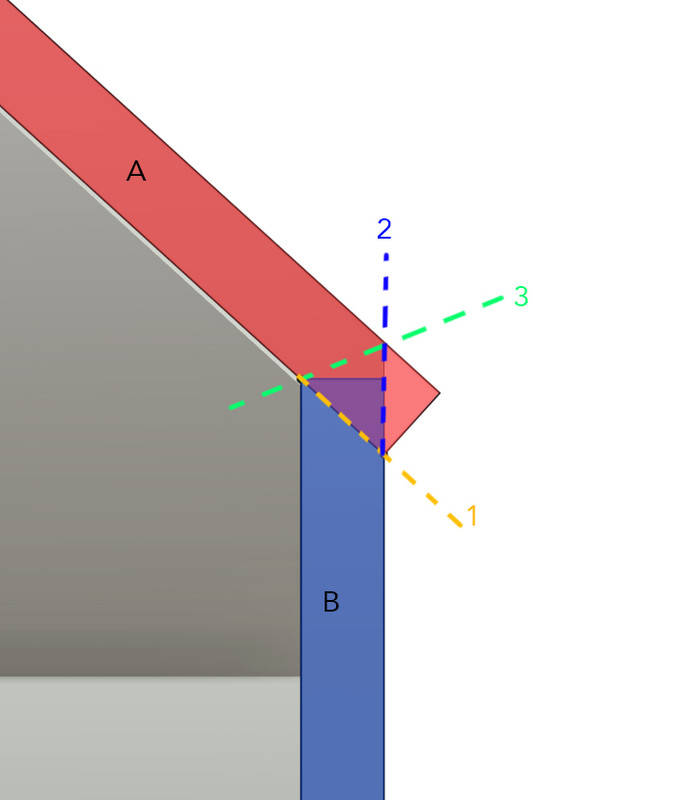
Dave
Wondering you someone can help me. I have recently purchased the festool domino df500 intending to use it on a new project. I foolishly ordered my wood (precut to my specifications) before really experimenting with the domino much.
I need to join the two pieces of wood A & B in the image. My inital plan was to cut A along line 2 and B along line 1 and use the domino to join them together. Putting a mortice in the top of Piece B is no problem (planning to drill the mortice before cutting the angle) But having just been experimenting, it doesnt seem like I can put an angled mortice in a flat surface? Am I being an idiot or is this the case?
In hindsight I realise I should have ordered different lengths and done a cut along line 3. Anyway I can make this work without re-ordering pieces of wood?
Any help appreciated, apologies if its a really stupid question. Im guessing a jig might do it, but surprise the domino wont on it own.

Dave

